RARE! 1943 WWII Original World War II United States Navy Fletcher-Class Destroyer USS Allen M. Sumner (DD-692) Panoramic Construction Blueprint (HOLD)
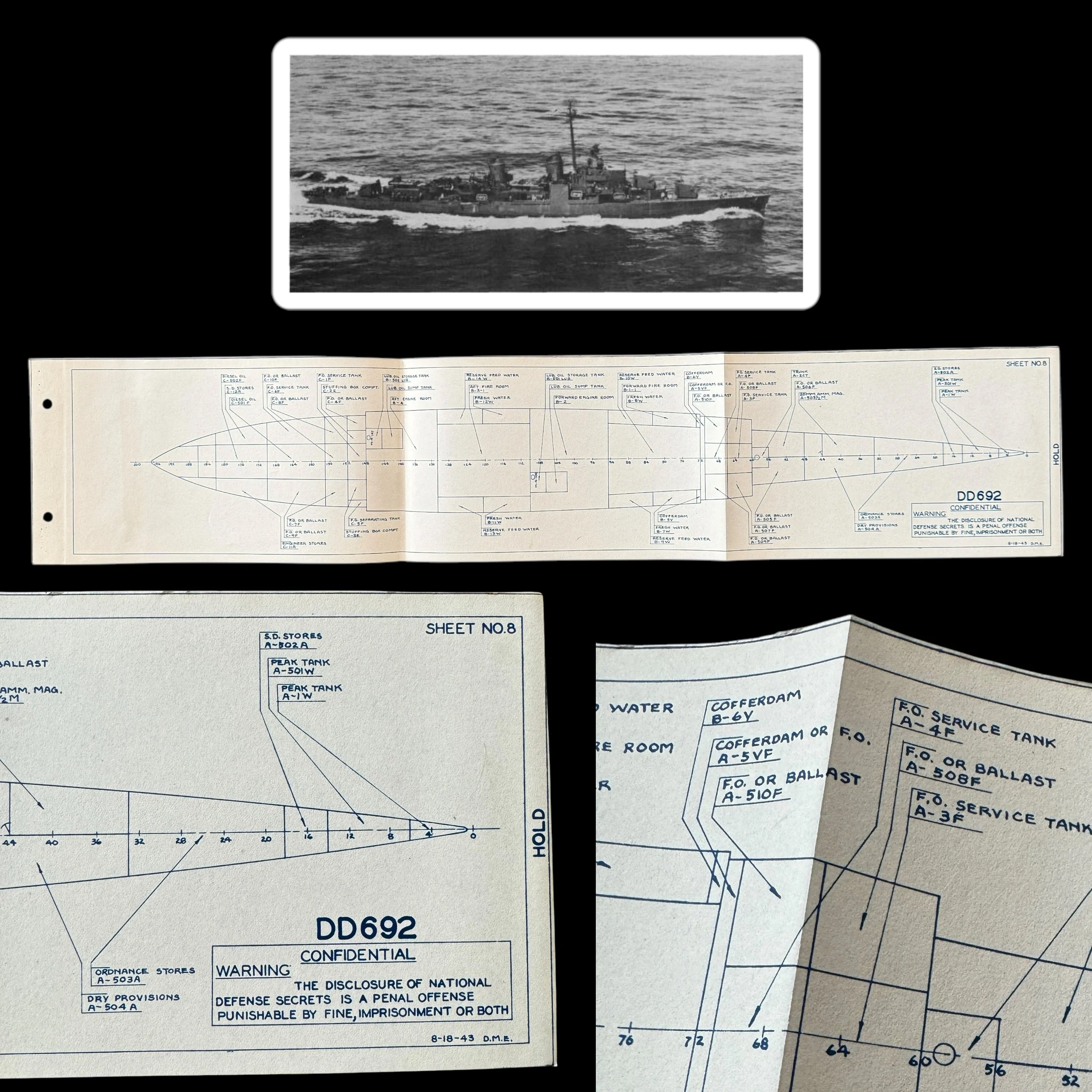
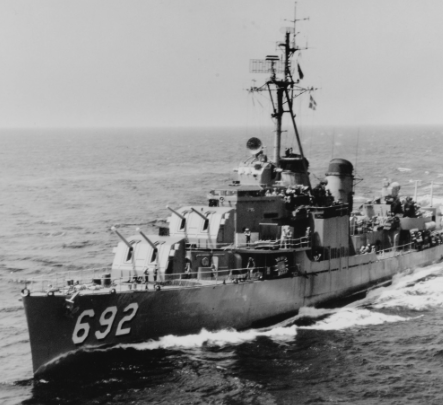
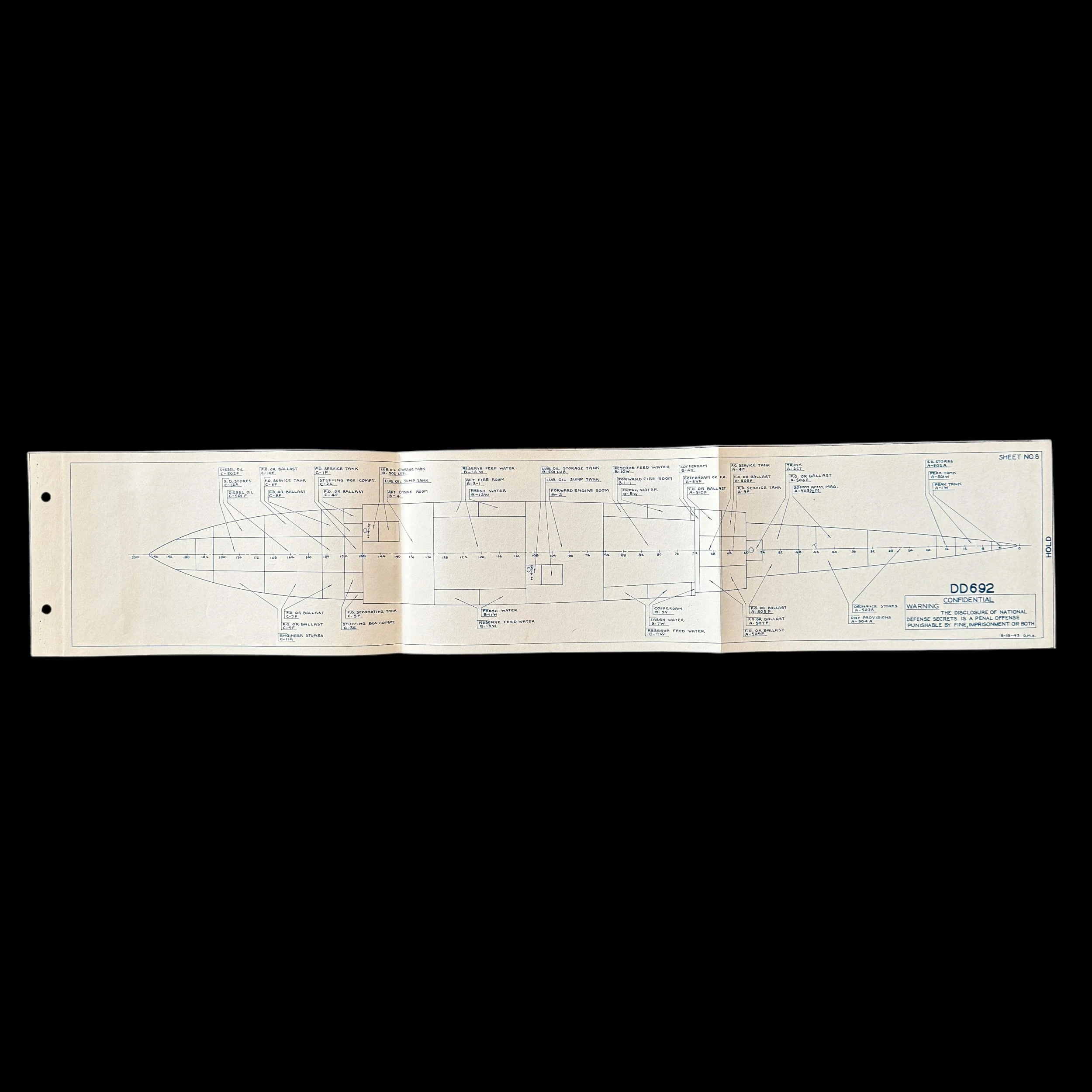
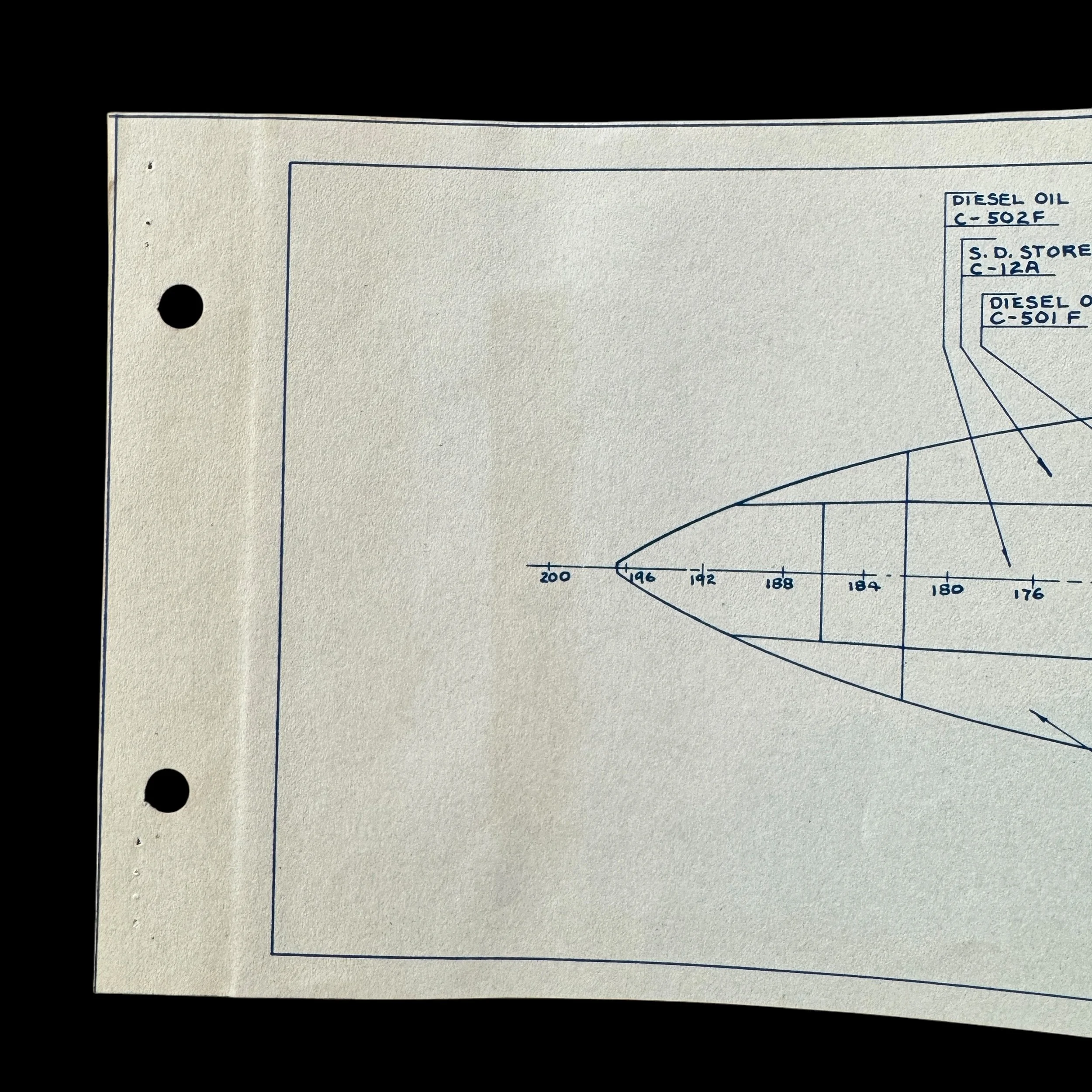

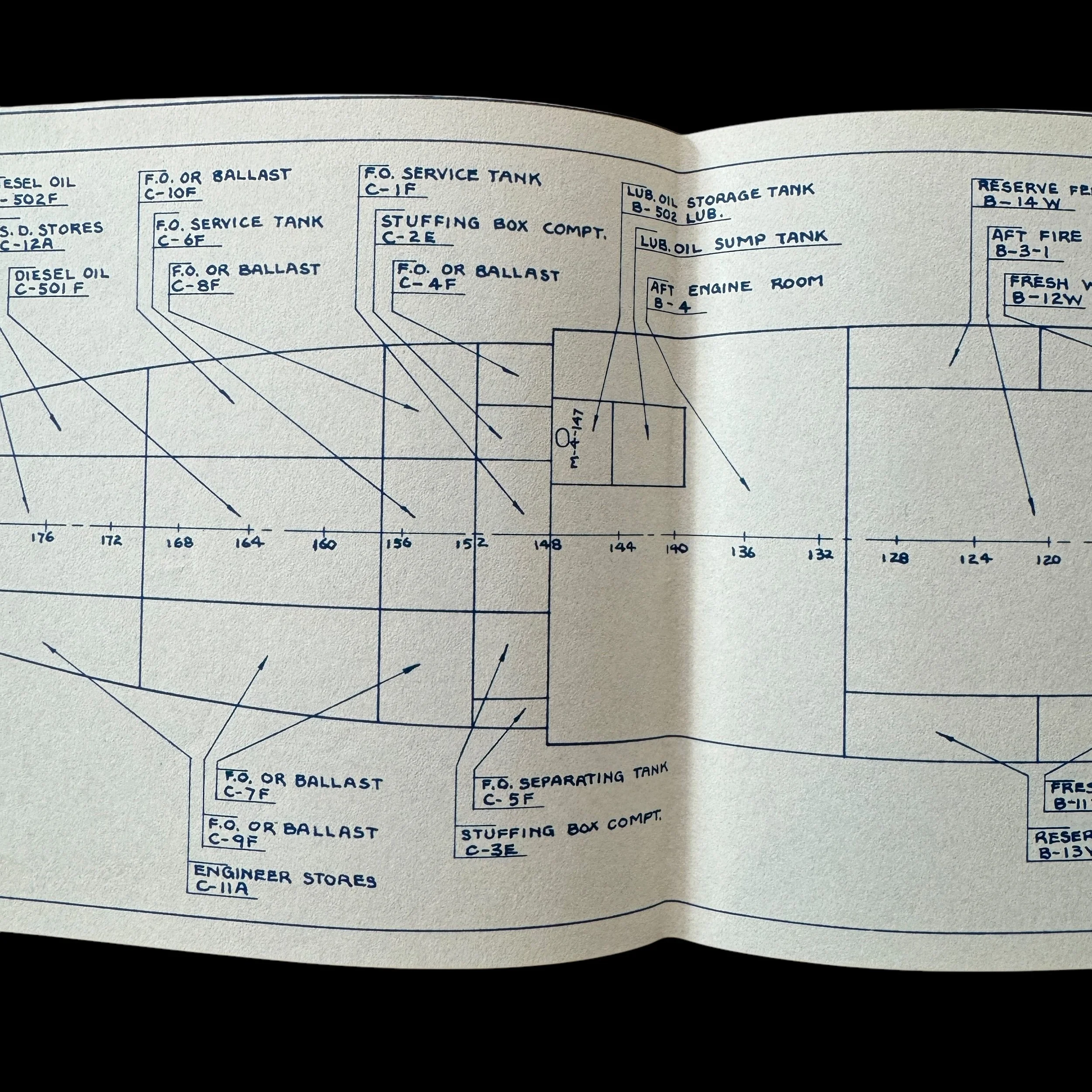









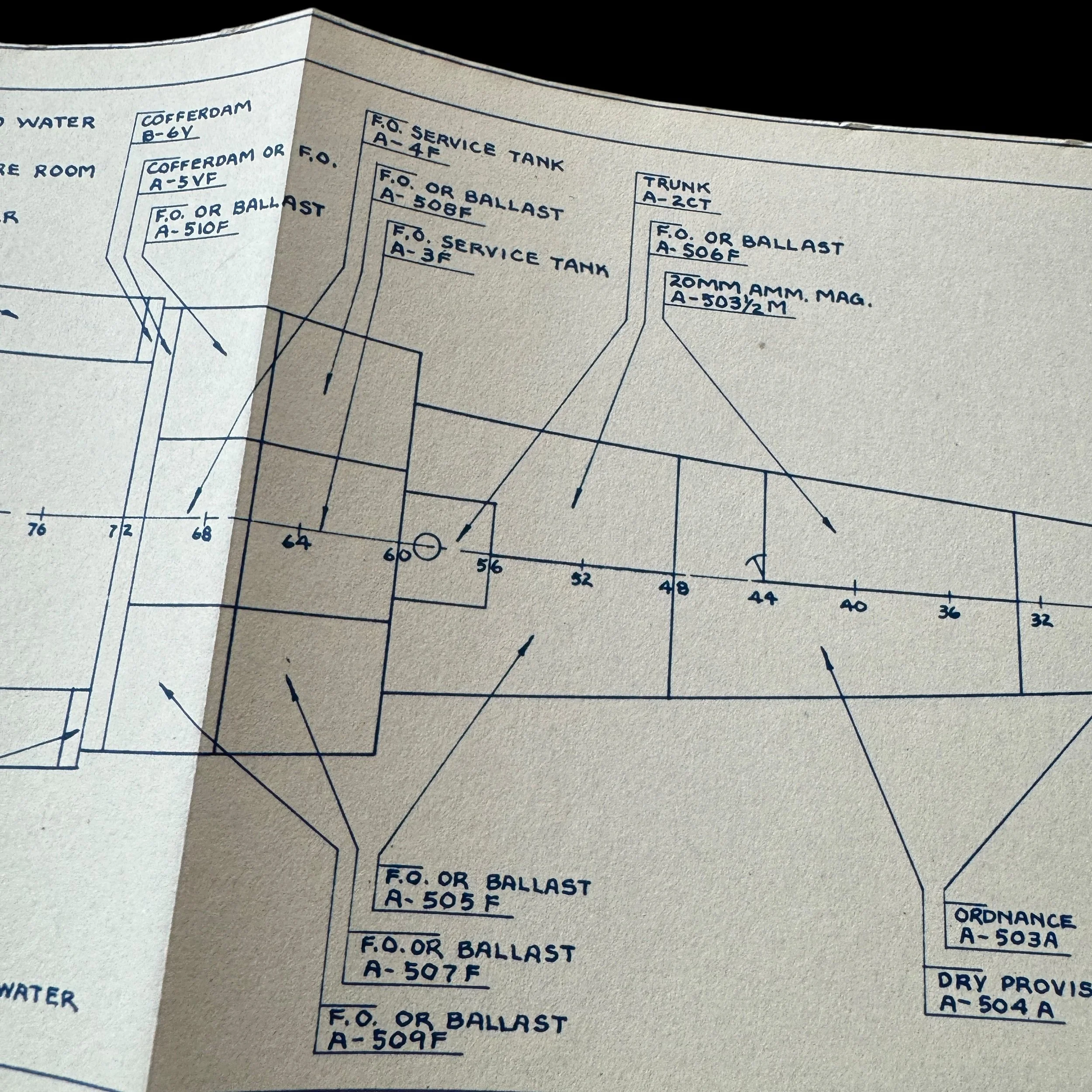
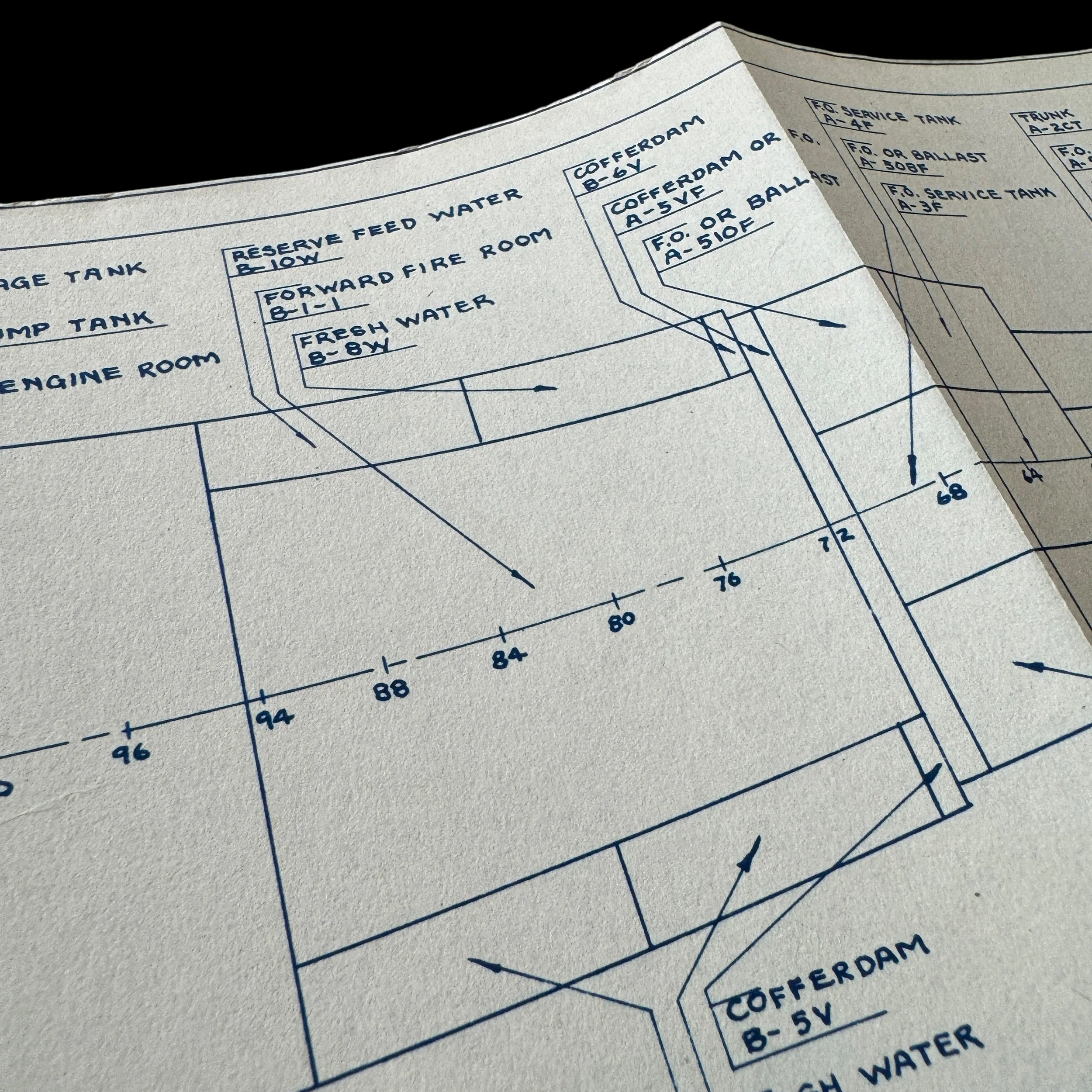
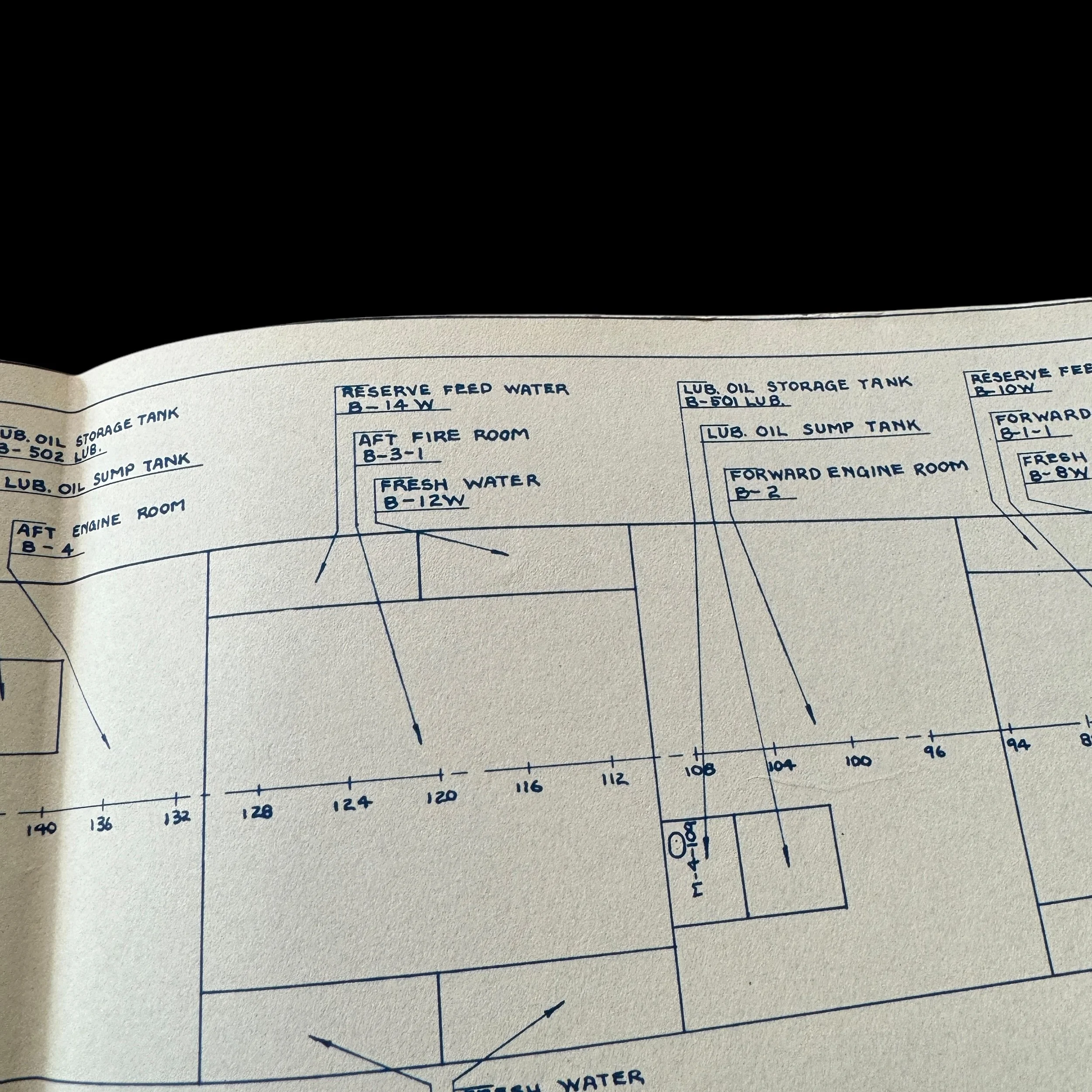


RARE! 1943 WWII Original World War II United States Navy Fletcher-Class Destroyer USS Allen M. Sumner (DD-692) Panoramic Construction Blueprint (HOLD)
Comes with hand-signed C.O.A. and a full historical write-up
Type: Original World War II United States Navy Fletcher-Class Destroyer USS Allen M. Sumner (DD-692) Blueprint
Blueprint Dated: 1943
This incredibly rare and museum-grade World War II artifact is an original 1943 dated World War II United States Navy Fletcher-Class Destroyer USS Allen M. Sumner (DD-692) blueprint. Marked “CONFIDENTIAL” this 1st edition early design blueprint was produced during the final construction and building phases of the USS Allen M. Sumner (DD-692) prior to its commissioning January 26, 1944 and its incredible World War II combat service history during the Battle of Saipan (June–July 1944), Battle of Tinian (July 1944), Battle of Guam (July–August 1944), Battle of Leyte Gulf (October 1944), Battle of Ormoc Bay (December 1944), Iwo Jima Campaign (February–March 1945), Okinawa Campaign (April–June 1945), and Operations off Japan (Mid-1945).
This specific WWII USS Allen M. Sumner (DD-692) original WWII blueprint comes from the bring-back collection of Lt. Jensen (Supervisor of Shipbuilding USN).
Summarized Pacific Theater Combat History of the USS Allen M. Sumner (DD-692):
Pacific Theater Operations:
Mariana and Palau Islands Campaign (1944):
Battle of Saipan (June–July 1944):
The USS Allen M. Sumner supported invasion operations with shore bombardments and anti-aircraft screening for the fleet.
Battle of Tinian (July 1944):
Conducted naval gunfire support and screening during the amphibious landings.
Battle of Guam (July–August 1944):
Provided fire support and screened carriers from aerial threats.
Philippines Campaign (1944–1945):
Battle of Leyte Gulf (October 1944):
Played a vital role in screening Allied carriers during the largest naval battle of World War II, where it protected the fleet against kamikaze and surface threats.
Battle of Ormoc Bay (December 1944):
Participated in anti-submarine and anti-aircraft duties during convoy escort missions to Leyte.
Iwo Jima Campaign (February–March 1945):
The destroyer supported the invasion with shore bombardments and provided air defense for the transport and carrier task forces.
Okinawa Campaign (April–June 1945):
Battle of Okinawa:
Acted as a picket ship to detect incoming Japanese kamikaze attacks and performed anti-aircraft and shore bombardment roles. The destroyer faced heavy air attacks during this prolonged campaign.
Final Operations in the Pacific:
Operations off Japan (Mid-1945):
Conducted operations with fast carrier task forces, supporting airstrikes against the Japanese mainland in preparation for the planned invasion of Japan.
Support for Occupation (August–September 1945):
After Japan's surrender, the USS Allen M. Sumner participated in post-war occupation duties, including support for the Allied fleet near Japanese waters.
Full Pacific Theater Combat History of the USS Allen M. Sumner (DD-692):
TheUSS Allen M. Sumner (DD-692)was the lead ship of its class of USN destroyers, representing a significant evolution in U.S. Navy destroyer design during World War II. Commissioned onJanuary 26, 1944, the Allen M. Sumner was built at the Federal Shipbuilding and Dry Dock Company in Kearny, New Jersey. Designed with enhanced armament, improved fire control systems, and greater anti-aircraft capability, the ship became a versatile workhorse in the Pacific Theater, participating in some of the most critical campaigns of the war.
Design and Capabilities
The USS Allen M. Sumner marked a significant upgrade from its predecessor, the Fletcher-class destroyers. Its design introduced a broader beam, allowing for enhanced stability and better anti-aircraft performance. The ship displaced approximately 2,200 tons and was powered by high-performance steam turbines, allowing a top speed of 34 knots. Armament included six 5-inch/38 caliber dual-purpose guns in three twin mounts, twelve 40mm Bofors anti-aircraft guns, and eleven 20mm Oerlikon cannons. The ship also carried ten torpedo tubes for anti-ship engagements and depth charges for anti-submarine warfare. These features made the Allen M. Sumner a formidable and versatile vessel, capable of engaging enemy aircraft, surface ships, and submarines.
Operational History
Entry into the Pacific Theater
After its commissioning and shakedown training in the Atlantic, the USS Allen M. Sumner transited the Panama Canal in the spring of 1944 to join the Pacific Fleet. Upon arriving in the Pacific, the destroyer quickly became involved in the U.S. Navy’s island-hopping campaign, which aimed to capture strategic islands and establish forward bases to support the eventual invasion of Japan.
Mariana and Palau Islands Campaign (1944)
The USS Allen M. Sumner first saw action during the Mariana and Palau Islands campaign. It supported the Battle of Saipan in June 1944, where it provided naval gunfire support for U.S. Marine landings. Destroyers like the Sumner were critical in suppressing Japanese coastal defenses and providing direct firepower for advancing ground forces. The ship also screened aircraft carriers conducting air strikes on Saipan, Tinian, and Guam, protecting them from Japanese aircraft and submarines. The destroyer’s anti-aircraft guns and depth charges were constantly in action, showcasing its multi-role capabilities.
Battle of Leyte Gulf (October 1944)
The Allen M. Sumner played a pivotal role in the Battle of Leyte Gulf, the largest naval battle of World War II. Serving as part of the carrier screening force, the ship protected U.S. task groups from waves of Japanese air attacks. The destroyer’s anti-aircraft batteries proved vital as kamikaze tactics began to emerge as a significant threat. The battle marked a turning point in the Pacific War, as the Imperial Japanese Navy suffered devastating losses, allowing the Allies to secure a critical foothold in the Philippines.
Iwo Jima Campaign (February–March 1945)
During the Battle of Iwo Jima, the USS Allen M. Sumner supported amphibious landings by delivering naval gunfire against Japanese fortifications on the island. The destroyer operated in concert with other ships to suppress enemy artillery and bunkers, clearing the way for U.S. Marines to establish a beachhead. In addition to its bombardment role, the ship remained on station to protect the fleet from Japanese air attacks, reflecting its ability to adapt to various mission requirements.
Okinawa Campaign (April–June 1945)
The Battle of Okinawa was one of the most intense and prolonged campaigns of the Pacific War, and the USS Allen M. Sumner played a critical role. Serving as a radar picket ship, it was stationed on the front lines to provide early warning of incoming Japanese air attacks. Radar picket duty was among the most hazardous assignments in the Navy, as ships in this role were often targeted by concentrated kamikaze attacks. The Allen M. Sumner endured relentless assaults, using its advanced anti-aircraft weaponry to defend itself and nearby vessels. Despite the constant danger, the destroyer fulfilled its mission with distinction, contributing to the success of the campaign.
Operations Against Japan (Mid-1945)
As the war drew to a close, the Allen M. Sumner joined carrier task forces conducting air strikes on the Japanese mainland. The destroyer provided anti-aircraft screening and supported operations aimed at crippling Japan’s remaining industrial and military infrastructure. These missions helped set the stage for Japan’s eventual surrender, bringing an end to the Pacific War.
Post-War Occupation Duties
Following Japan’s surrender in August 1945, the USS Allen M. Sumner was assigned to occupation duties, supporting Allied forces as they secured Japan and its territories. The ship played a role in maintaining stability and demonstrating the continued presence of U.S. naval power in the region.
Legacy and Significance
The USS Allen M. Sumner earned two battle stars for its service in World War II, a testament to its active involvement in key campaigns across the Pacific Theater. Its design innovations and operational success established the Sumner-class destroyers as critical components of the U.S. Navy’s fleet during the latter stages of the war. The ship’s contributions to battles such as Leyte Gulf, Iwo Jima, and Okinawa highlighted its versatility and resilience in the face of evolving threats, from kamikaze attacks to entrenched shore defenses.
Beyond its combat record, the USS Allen M. Sumner represented the ingenuity and industrial might of the United States during World War II. Its service exemplified the Navy’s strategy of leveraging advanced technology and adaptable platforms to achieve dominance in multiple theaters. Today, the Allen M. Sumner and its class are remembered for their role in securing Allied victory and shaping the post-war balance of power in the Pacific.